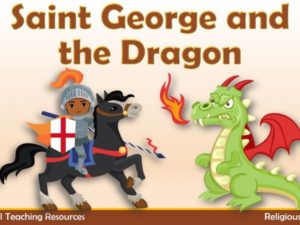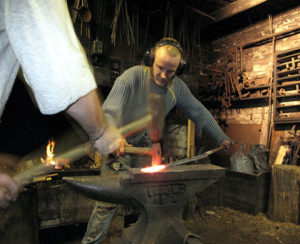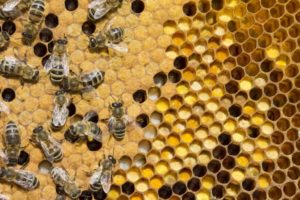For teacher news and art home learning please see posts below this one!
Dear all
Here is our home learning for the week including our weekly family science activity and music exploration. We so hope that you enjoy this learning together. May we take this opportunity to say that there is no need to complete all of the learning below! The focus should be on maths, English and reading and then maybe you could choose one other project to do from the home learning ideas? Or more if you want to obviously! Make this time at home enjoyable and treasure the time you are together having fun!
Remember that you can send us a piece of the children’s work or an activity that they want to share every week on our new class email addresses:
Turtleclass@stpeterswaterlooville.hants.sch.uk
Pufferfishclass@stpeterswaterlooville.hants.sch.uk
We would love to see what the children are getting up to at home! Thank you to all of you who have sent in pictures so far. Keep them coming!
Just a reminder about the letter that Mr Cunningham sent you last week from the DFE. It will have daily phonics lesson for the children following the letters and sounds programme that we use in school. We hope it is helpful!
Don’t forget to look at Sumdog for maths, reading and spelling challenges which will be updated each week. See also mymaths for maths challenges.
English reading and writing
In this weeks sequence of lessons you will be learning about the story of ‘St George and the Dragon’. You will be doing some phonics focusing on the sound oa (goat), ow (snow) and o-e (bone) as well as some spellings linked to the story. You will be learning all about St George, who he was and learning a bit about the geography of the United Kingdom in the process! As last week you will be committing the story to memory and making a story map. Then you will be developing a character description of a dragon and describing its personality using some great adjectives to describe him/her. Have fun!
If it is a bit tricky or moves too fast for your child just focus on the key phonics being taught, or one version of the sound that your child knows e.g. oa, and on verbally retelling the story and writing some simple sentences rather than retelling the whole story. Drawing and labelling the dragon will be a great activity for all to tackle. Do what you feel is right for your child.
If you have no or poor access to a computer or similar see if you can find out about the story of St George and the Dragon and follow the plan as outlined above. This is a nice sequence of activities that you can do without a computer!
https://www.thenational.academy/year-1/english/saint-george-and-the-dragon-year-1-wk3-1
https://www.thenational.academy/year-1/english/to-commit-a-story-to-memory-year-1-wk3-2
https://www.thenational.academy/year-1/english/to-describe-a-characters-appearance-year-1-wk3-3
https://www.thenational.academy/year-1/english/to-describe-a-characters-personality-year-1-wk3-4
https://www.thenational.academy/year-1/english/to-write-a-character-description-year-1-wk3-5
Reading
We attach the following link again as it has some useful ideas. See page three. We are sure that you are doing many of them already!
Menu of reading response ideas KS1
Also see the Collins connect PDF below for access to lots of books to read online.
ONLINE READING COLLINS CONNECT
Spelling
Choose a set 1 or set 2 and practise spelling.
Set 1: love, her, pull, put
Set 2: their, could, because, were
Try writing these in different ways: can you ‘write’ them on the back of someone in your house?
Maths
This week we will be exploring numbers to 100. Follow this sequence of lessons.
To recognise, read and write numbers to 100
https://www.thenational.academy/year-1/maths/to-recognise-read-and-write-numbers-to-100-year-1-wk3-1
To explore the components of numbers within 100
To explore the components of numbers within 100
To apply knowledge of number bonds.
https://www.thenational.academy/year-1/maths/to-apply-knowledge-of-number-bonds-year-1-wk3-4
To find one more or one less and ten more or ten less.
This week we are going to think a bit more about where the minibeasts in our environment live – their habitat. When you have looked outside at minibeasts in your garden or park did you notice anything different about the sorts of places that they live? Were some out in the sunshine while others lived in cold, damp and dark places? Are some up in trees and bushes while others live underground? Did they all live together as a ‘family’ or are they insects that live on their own? Go and have a look outside and note down any observations you can make about their ‘habitat’. This little video shows a few different minibeasts in their habitats. The way that the bees and ants live is so clever!
https://www.youtube.com/watch?v=JuHg5oWF_mo
Topic
Can you find out about what it was like to live and work in a mediaeval castle? What sorts of jobs did people in a castle do? What is the job of an armorer? Or the apothecary? And what was a cordwainer?! See if someone at home can help you to use the computer to do some research about jobs in a castle and then make a fact file with pictures to show what you have find out about the different jobs.
The video below is quite long and aimed at older children / adults but is quite interesting in talking about who and how you become an armourer and with some modern day demonstration of how armour was made. Your adult might like to find some bits in the video that may be interesting to you! It is a bit longwinded!
https://www.youtube.com/watch?v=NsNPNxq7re0
Music
Listen carefully to the music.
https://www.youtube.com/watch?v=oCUtOKsmOZ8
Can you spot when it gets loud and quiet?
What might live in the aquarium? What else might you see?Could you create an aquarium in a bowl of water? How might the animals move around?
Family Science Activity – Friday 8th May
THE SCIENCE OF OOBLECK
https://www.science-sparks.com/how-to-make-oobleck/
Did you notice that if you make a ball with oobleck or gloop it feels solid, but if you drop the oobleck on the floor it turns liquid again? The slime is a non – Newtonian fluid as it doesn’t flow like liquids normally do.
https://www.youtube.com/watch?v=Fnd-2jetT1w
Cornflour gloop ( oobleck ) is made up of molecules arranged in long chains. When the chains are stretched the liquid will flow, but when you force them together they stick together to form a solid.
OOBLECK RECIPE
- Cornflour
- Water
- Food colouring – optional
- Ice cube trays – optional
- Mixing bowl
- Colander, funnel and beakers – optional, but great for messy fun!
INSTRUCTIONS FOR MAKING CORNFLOUR GLOOP
- Fill a cup with cornflour and add to the bowl
- Add water very slowly mixing with your hands, until you get a sticky, slimy gloop.
- If you want to make it coloured add some food colouring. ( be careful this can stain skin and clothes)
- Play with the slime and see how it behaves. Can you make it into a ball? and what happens if you throw it onto the floor?
- Can you squeeze the slime into a ball? What does it feel like? How long does the ball stay solid after you let go?
- If you used less water do you think the slime would fall faster or more slowly through the colander?
OOBLECK CHALLENGE
Can you make a giant oobleck tray and walk on oobleck?
HOW TO MAKE A GIANT OOBLECK TRAY
To make our giant oobleck tray – pour about 1 kg of cornflour into a large black tray and slowly added water until the consistency was wet, but solid when squeezed.
Friday 8th May – Religious education
| Subject knowledge: Fifty days after his resurrection, the Lord sent the Holy Spirit down from heaven upon his disciples. The age of the church began. Pentecost shows that the church is there for all peoples from the very beginning. |
As part of your RE learning, we would like you to focus upon the upcoming celebration of Pentecost
- Watch a video on YouTube or read from the gospel, Act 2 1-13.
When did the Pentecost happen?
What did Jesus promise?
How did the disciples feel before and after the spirit came?
- Retell the story using pictures or your toys.
- Draw, paint or create your favourite part of the story.
Key Verse: John 3:8 “The wind blows where it wishes and you hear the sound of it, but do not know where it comes from and where it is going; so is everyone who is born of the Spirit.”
Materials Needed:
One square piece of paper, scissors ,one split pin, pencil, crayons, coloured pencils, and stickers for decorating the pinwheels.
Instructions:
Fold the paper on the diagonal from corner to corner. Open the paper up and fold on the second diagonal across the other two corners. When the paper is opened flat, the folds make an “X” across the square.
Make one cut along each fold beginning at the corner and cutting toward the centre. The cut should stop about halfway toward the centre. The cut should not go all the way to the centre of the square.
Decorate each section of the square on both sides.
Take every other corner, one at a time and gently pull it up to the centre of the square.
When all four corners meet at the centre, take the split pin and push it through all four corners through the centre of the square.
Push the split pin through the eraser of the pencil.
Blow on the pinwheel and watch it spin!
Use this craft to teach the children about how we can hear and feel the wind, but we cannot see it. We can see the results of the wind, but we cannot see the wind itself. Relate this to God. We can hear His voice through His Word and feel His peace, comfort, joy, etc. We cannot see Him, but we can see the results of His work.
- What was it like in the room when the Holy Spirit came to the disciples?
Look at pictures of artists impressions of the upper room.
What do you think is happening in these pictures?
How do you think the disciples are feeling?
- Draw, paint or create your own impression of what the upper room looked like.







